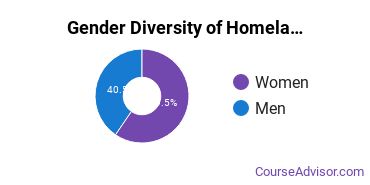Homeland Security, Law Enforcement & Firefighting at Dixie State University
What traits are you looking for in a homeland security, law enforcement & firefighting school? To help you decide if Dixie State University is right for you, we've gathered the following information about the school's homeland security, law enforcement & firefighting program.Dixie State College is located in Saint George, Utah and has a total student population of 12,043.
Want to know more about the career opportunities in this field? Check out the Careers in Homeland Security, Law Enforcement & Firefighting section at the bottom of this page.
Dixie State College Homeland Security, Law Enforcement & Firefighting Degrees Available
- Associate’s Degree in Homeland Security, Law Enforcement & Firefighting
- Bachelor’s Degree in Homeland Security, Law Enforcement & Firefighting
Dixie State College Homeland Security, Law Enforcement & Firefighting Rankings
The homeland security, law enforcement & firefighting major at Dixie State College is not ranked on College Factual’s Best Colleges and Universities for Homeland Security, Law Enforcement & Firefighting. This could be for a number of reasons, such as not having enough data on the major or school to make an accurate assessment of its quality.
Homeland Security, Law Enforcement & Firefighting Student Demographics at Dixie State College
Take a look at the following statistics related to the make-up of the homeland security, law enforcement & firefighting majors at Dixie State University.
Dixie State College Homeland Security, Law Enforcement & Firefighting Associate’s Program

The majority of those who receive an associate's degree in homeland security, law enforcement & firefighting at Dixie State College are white. Around 67% fell into this category, which is below average for this degree.
The following table and chart show the race/ethnicity for students who recently graduated from Dixie State University with a associate's in homeland security, law enforcement & firefighting.

| Race/Ethnicity | Number of Students |
|---|---|
| Asian | 0 |
| Black or African American | 0 |
| Hispanic or Latino | 1 |
| White | 6 |
| International Students | 1 |
| Other Races/Ethnicities | 1 |
Dixie State College Homeland Security, Law Enforcement & Firefighting Bachelor’s Program

About 68% of those who receive a bachelor's degree in homeland security, law enforcement & firefighting at Dixie State College are white. This is above average for this degree on the nationwide level.
The following table and chart show the race/ethnicity for students who recently graduated from Dixie State University with a bachelor's in homeland security, law enforcement & firefighting.

| Race/Ethnicity | Number of Students |
|---|---|
| Asian | 0 |
| Black or African American | 2 |
| Hispanic or Latino | 13 |
| White | 36 |
| International Students | 0 |
| Other Races/Ethnicities | 2 |
Concentrations Within Homeland Security, Law Enforcement & Firefighting
If you plan to be a homeland security, law enforcement & firefighting major, you may want to focus your studies on one of the following concentrations. The completion numbers here include all graduates who receive any type of degree in this field from Dixie State University. Some of these focus areas may not be available for your degree level.
| Concentration | Annual Degrees Awarded |
|---|---|
| Criminal Justice & Corrections | 55 |
Related Majors
Careers That Homeland Security, Law Enforcement & Firefighting Grads May Go Into
A degree in homeland security, law enforcement & firefighting can lead to the following careers. Since job numbers and average salaries can vary by geographic location, we have only included the numbers for UT, the home state for Dixie State University.
| Occupation | Jobs in UT | Average Salary in UT |
|---|---|---|
| Accountants and Auditors | 9,580 | $70,980 |
| Computer Workers | 6,470 | $76,890 |
| Police and Sheriff’s Patrol Officers | 4,490 | $53,890 |
| Managers | 3,310 | $102,290 |
| Child, Family, and School Social Workers | 2,340 | $44,160 |
References
*The racial-ethnic minorities count is calculated by taking the total number of students and subtracting white students, international students, and students whose race/ethnicity was unknown. This number is then divided by the total number of students at the school to obtain the racial-ethnic minorities percentage.
- College Factual
- National Center for Education Statistics
- O*NET Online
- Image Credit: By Manway under License
More about our data sources and methodologies.
